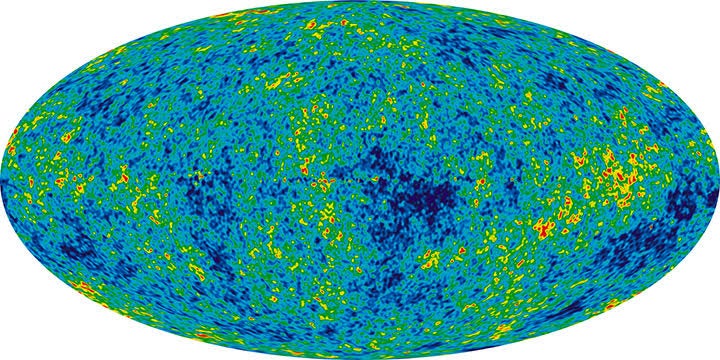
The Computing Program congratulates Kathryn Drake, a Ph.D. student with an emphasis in Computational Science and Engineering, who has had two articles published since 2020 with The Journal of Computational Physics. Despite the circumstances of COVID-19, Kathryn has excelled in the Computational community and has stayed motivated to continue her research for her two papers. “The first paper was motivated by my first research grant through the NASA Idaho Space Grant Consortium, which I was awarded for the first year of my Ph.D. The second paper is the result of my research for my master’s degree. We received a welcomed nudge to finally finish the publication from a meteorologist at Germany’s national weather service who was interested in using the numerical methods we developed (which he found from my master’s thesis on scholarworks).”
The first paper concerns the Cosmic Microwave Background (CMB) Radiation (K. P. Drake and G. B. Wright. A Fast and Accurate Algorithm for Spherical Harmonic Analysis on HEALPix Grids with Applications to the Cosmic Microwave Background Radiation. J. Comput. Phys., 416 (2020)), which is the light we can still detect from the Big Bang. The paper introduces a new way to calculate an important quantity of the CMB, which can then be used to understand the nature of dark matter and dark energy. The second paper presents a new method for reconstructing certain types of vector fields on the sphere using scattered data points (K. P. Drake and G. B. Wright. A stable algorithm for divergence-free radial basis functions in the flat limit. J. Comput. Phys., 417 (2020)). The researchers used vector-valued radial basis functions and proposed a new way to bypass instability in their calculation.
Kathryn, who is native to Rupert, Idaho, found out about The Journal of Computational Physics in Spring of 2019 when she was matched with a mentor through the Association for Women in Mathematics. This mentor has a colleague who is an esteemed computational physicist at Lawrence Berkeley National Lab. “My mentor was kind enough to send the abstract of my first publication to this colleague, and he suggested going for publication in the Journal of Computational Physics.” The application process took a total of about 7 months (most of which was waiting for the response from the journal), but other than that, the process was fairly straightforward: “I submitted my paper, and about 4 months later I was notified that it was accepted with minor revisions. My advisor, Professor Wright, helped me respond to the reviewer’s comments and submit the revised draft. A week or so later, the paper was accepted.”
With the help and assistance of her advisor, Grady Wright, both papers offer fast and accurate ways to perform important and relevant computations. “I definitely could not have done this without the assistance of my advisor. Having his experience was crucial to navigating the process.” Hopefully, the community will find ways to incorporate the methods in their work or use them as a starting point for other research ideas.
These publications will help Kathryn demonstrate the variety of areas in which her interdisciplinary skills are applicable.” The skills that I have gained in this program are useful in many disciplines and industries.” The Computing Ph.D. Program is known for its interdisciplinary nature and is one of the major things that made Kathryn choose the Computing Ph.D. program at Boise State University.
*The picture above is of the Cosmic Microwave Background Radiation from “A Fast and Accurate Algorithm for Spherical Harmonic Analysis on HEALPix Grids with Applications to the Cosmic Microwave Background Radiation.”